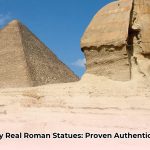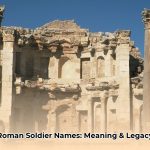Ever heard of Sarah Meyerson? Probably not. She was Golda Meir’s daughter, and while her mom’s story is famous, Sarah’s is a bit of a mystery. This piece digs into her life – her upbringing on a kibbutz, her beliefs, and how she made her mark on Israel. We’ll look at what we do know, and what we don’t, and even talk about how to find out more about other fascinating but overlooked figures like her. Get ready for a story of a strong woman who quietly changed things. For more on her education, see her educational background.
Sarah Meyerson: A Daughter’s Shadow, A Life Unveiled
The life of Sarah Meyerson, daughter of the legendary Golda Meir, remains largely a mystery. While her mother’s name echoes through history books, Sarah’s story is a quiet narrative tucked away from the bright lights of public life. Finding information about her life is like searching for a single star in a vast sky. This article explores the challenges of unraveling her life, piecing together her story from available fragments. Can collaborative research efforts bring Sarah Meyerson’s story to light, despite the limited information available?
A Life Lived Quietly
Imagine growing up as the daughter of Israel’s Prime Minister. The constant attention, the enormous expectations – it must have been overwhelming. But Sarah chose a different path. She wasn’t seeking the spotlight. Instead, she dedicated her life to social justice and community building, working tirelessly but largely out of the public eye. This quiet dedication is, in itself, a significant part of her story. Did her mother’s fame empower her to pursue her passions, or did it create an insurmountable shadow? How did her family life shape her choices? These are questions that continue to spark debate among those who study this elusive figure. Her commitment represents a powerful, though often overlooked, form of activism.
Finding Meaning in Kibbutz Life
Sarah chose to live on Kibbutz Revivim, a collective farming community in the Negev desert. Kibbutzim represent a distinct ideal: shared living, self-sufficiency, and a strong connection to the land. Living amongst this close-knit community likely had a deep impact on her values and beliefs. Her decision to live communally wasn’t just a lifestyle choice—it reflected a larger social movement in post-statehood Israel. According to a relative, Sarah settled in Kibbutz Revivim after completing her studies at the Tel Aviv School of Education at age 18.. Did the Kibbutz influence her activism? Did the shared values, the spirit of cooperation, further strengthen her commitment to social justice? These are important avenues for future research. Sarah’s time on Kibbutz Revivim highlights the importance of communal living in shaping her human rights focus.
The Puzzle of Missing Pieces: The Research Challenge
Understanding Sarah Meyerson’s life is a detective’s challenge. While her devotion to human rights is well-documented through scattered accounts, concrete details about her professional work are rare. Even basic facts, like her exact birthdate, vary depending on the source. While some sources place her birth in 1926, others suggest 1948. This lack of clarity makes it difficult to fully grasp her contributions. This scarcity of information leaves us with more questions than answers. Where did her professional path lead? What were her greatest accomplishments? What crucial documents are missing, and where might we find them? The search for the missing pieces of her puzzle is ongoing. The difficulty in documenting Sarah Meyerson’s achievements highlights the issues in recording historical narratives of women.
Unearthing the Truth: A Collaborative Effort
Uncovering Sarah’s story requires a combined effort. Historians, researchers, and possibly human rights organizations need to work together. We must delve into Israeli and American archives, looking for fragments of her story. Stories from people who knew her – their personal accounts, letters, diaries, even legal documents – are invaluable. These oral histories could provide those missing fragments. This cooperative research approach is vital to building a more complete picture of her life. Could oral histories of those who knew Sarah fill in gaps in historical records?
A Legacy Beyond the Headlines
While Sarah Meyerson may not have graced the front pages of newspapers or appeared frequently in the media, her work deserves to be remembered. Her quiet dedication to human rights and community building represents a powerful but often overlooked form of activism. Her life is a reminder that profound impact doesn’t always involve a public presence. It highlights how easily stories, especially those of women in the shadows of powerful men, can be lost to history. By learning about her life, we not only honor her contributions but also learn valuable lessons about the importance of preserving historical records and the need to amplify the voices of those often overshadowed. Her story is a testament to the quiet strength and enduring power of those who work tirelessly behind the scenes.
Looking Ahead: A Call for Further Investigation
Unraveling the mystery of Sarah Meyerson’s life is a work in progress – a continuous journey of discovery. What can be done to ensure that the stories of other overlooked historical figures are preserved?
The limited media coverage of Sarah Meyerson serves as a powerful reminder that history is often incomplete. Many stories remain untold, particularly for individuals who chose a quiet path. By continuing to seek out these hidden narratives, we enrich our understanding of the past and ensure that the quiet contributions of individuals like Sarah Meyerson are finally acknowledged.
How to Research the Life of a Lesser-Known Historical Figure: Uncovering Sarah Meyerson’s Story
Key Takeaways:
- The historical record often overlooks women and marginalized groups. Finding information on lesser-known figures requires persistence and creative research strategies.
- Primary sources, like letters, diaries, and photographs, are invaluable, but often scarce. Secondary sources must be critically evaluated for potential biases.
- Community engagement and oral histories can unearth crucial details missing from official archives.
- How to research the life of a lesser-known historical figure involves combining meticulous archival work with a broader understanding of the social and political context.
Navigating the Labyrinth of Limited Sources
Uncovering the life of an obscure historical figure like Sarah Meyerson presents unique challenges. Where do you even begin? It’s like searching for a single star in a vast sky. Unlike well-documented historical figures, piecing together their narratives requires dedication and adaptability. You might need to employ an entirely different research method than usual.
First, exhaust traditional archives. Explore libraries, historical societies, and museums. Look for census records, birth certificates, and marriage licenses—any official documents that might mention her. Don’t limit your search to national archives; local repositories often hold hidden gems. This initial step provides a foundational understanding, offering potential clues for further investigation. What are strategies to efficiently navigate the abundance of archival materials in historical research?
The Power of Primary Sources
The holy grail of historical research is the primary source. These are the firsthand accounts of a person’s life. Think personal letters, diaries, autobiographies, or even photographs. These give you an intimate view of the individual, offering authenticity that’s often absent in secondary sources. But finding them can be like searching for a needle in a haystack! Securing primary sources is important because they create a direct connection to the figure.
Beyond the Archives: Community and Oral Histories
Often, the most telling details lie outside traditional archival spaces. Engage the community. Are there descendants? Local historians or family members who hold oral histories? This approach allows you to tap into local knowledge and uncover family stories that might never have made it into official records. Imagine the richness a great-grandchild’s recollections could add to your understanding of her life. How can researchers ethically and effectively gather and utilize oral histories from individuals connected to lesser-known historical figures?
Contextualizing the Past: The Importance of Interpretation
Remember, history is not just a collection of facts; it’s an interpretation of those facts. Understanding the historical context is crucial. What were the socio-political dynamics of Sarah’s time? What were the prevalent beliefs, societal norms, and challenges faced by women during that period? These questions help contextualize her life within a larger narrative.
Reconstructing a Life: Building a Narrative from Fragments
How to research the life of a lesser-known historical figure is akin to piecing together a shattered mosaic. You may never have a complete picture, but gradually, through careful research and thoughtful interpretation, a vibrant portrait of Sarah Meyerson can emerge. Embrace the gaps in knowledge; they highlight the challenges of working with limited information. However, remember that even these gaps can inform your understanding. They might reveal existing biases in historical recording or even suggest avenues for future investigation. The use of historical context can fill gaps from primary documents.
Ethical Considerations: Respecting the Subject and Their Story
Finally, remember the ethical responsibility that comes with historical research. You are not just uncovering facts; you’re constructing a biography. Treat your subject with respect. Be mindful of the limitations of your data and the narratives you can create from it. Acknowledge what you don’t know. Present your findings in a balanced and nuanced way. What can researchers do to ensure ethical representation when constructing biographies of lesser-known historical figures?
Sarah Meyerson’s Kibbutz Life and its Impact on Her Human Rights Advocacy
Key Takeaways:
- Sarah Meyerson, Golda Meir’s daughter, carved her own path as a human rights advocate.
- Her life on Kibbutz Revivim shaped her worldview and commitment to social justice.
*










